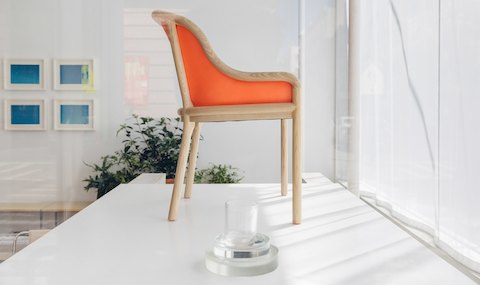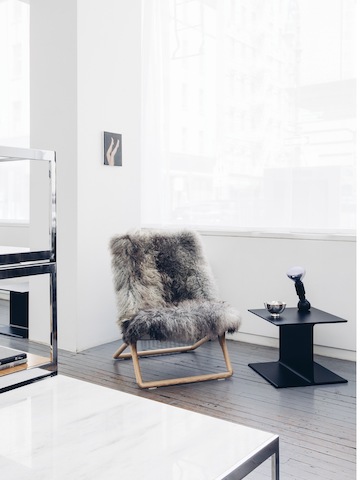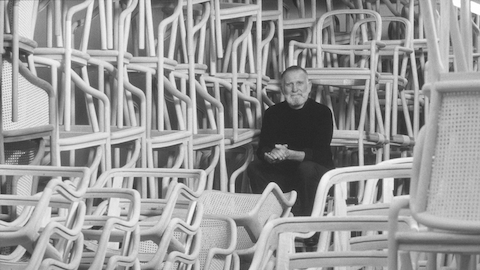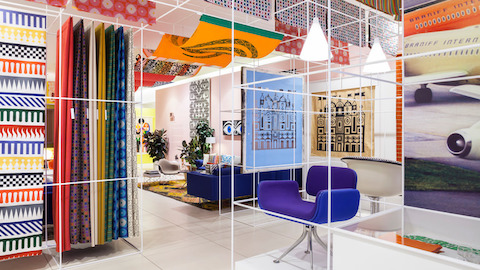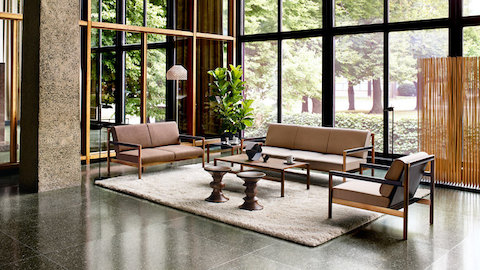When Elizabeth Beer and Brian Janusiak, cofounders of the multidisciplinary design studio Various Projects, were invited to collaborate with Herman Miller and Geiger on an exhibit during New York’s Design Week, they were immediately drawn to the designer Ward Bennett. “It instantly seemed like he should be much more known than he is to our generation and generations after. It was a great opportunity for us to tell the story and show why we think it’s so worth knowing,” explains Janusiak.
A self-educated polymath, Bennett drew inspiration from a range of eras and disciplines. Before making a name for himself in furniture and interior design in the 1960s and ‘70s, he worked in fashion, interacted with masters like Brancusi, Giacometti, and Le Corbusier, and shared a studio with sculptor Louise Nevelson. His own sculpture was exhibited at the Whitney’s Annual Exhibition of 1950, and in 1960, the Museum of Modern Art mounted a one-man show of his jewelry designs.
“His way of working was prescient,” explains Beer. “It’s now expected that people can be flexible enough to take their aesthetic from one medium to another, but then it really didn’t seem like people were doing that as much.”
The resulting exhibition reintroduces the world to Bennett’s contributions to the design canon in a surprising and multisensory way. Installed at Various Project’s curated retail space Project No. 8 at 38 Orchard Street in New York City, Ward Bennett: Making Sense features iconic furnishings, upholstered in contemporary materials, along with objects and reference materials. Visitors are invited to get comfortable, read, touch, and delve into Bennett’s world.
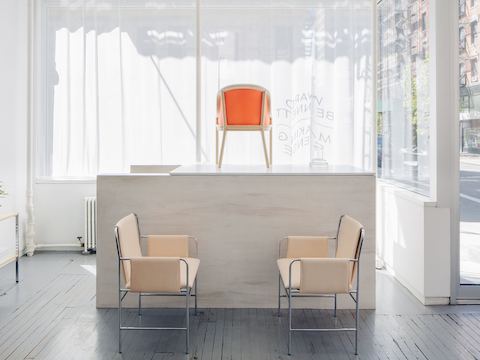
For the installation at Project No. 8, Ward Bennett Landmark Chairs and Envelope Chairs were finished in materials chosen by Various Projects: RAL Luminous Red Leather, Geiger Alpaca Mohair in charcoal, and Vachetta leather.
WHY sat down with Various Projects prior to the installation of the show to talk about their relationship to Bennett’s work and his relevance to design today.
What was your first experience with Ward Bennett? How did you encounter his work?
Brian: I think that my first experience was probably with his furniture—but not knowing it was his. My first conscious experience was with the tabletop pieces, and just being really compelled by the physicality of them, the heaviness, the feel, the interesting sort of industrial sensitivity (this weird pulling together of things that seem disparate) and then learning it was this American designer—Ward Bennett—and storing that away in my head. That was it until recently.
Elizabeth: For me it was similar, in that I’d heard his name and I associated it with a few of the iconic furniture pieces. And I’d heard about his architecture and interiors, though I don’t know that I had any strong sense of what that was. But in doing research, we discovered so many affinities. I realized, having grown up in New York, how influential he’d been to me personally. Like in his interest in the notion of High Tech. That was something I was fascinated by from an early age, but I didn’t realize he was one of the leaders of that movement. There were buildings I’d known since childhood that I didn’t realize he’d been involved in. In reading about Bennett I learned that he was more familiar to me than I had known. Also his approach, to me, feels very familiar.
Has some of that learning been taking place through this project?
Elizabeth: Most of it.
Brian: I think we would have had an ambient appreciation for Ward Bennett, but this project has allowed us to get deeply personal with his work and with his approach and steep ourselves in it in a deeply gratifying way.
Elizabeth: We’ve been able to reach out to people who knew him, all sorts of opportunities that we would never have had the wherewithal to pursue.
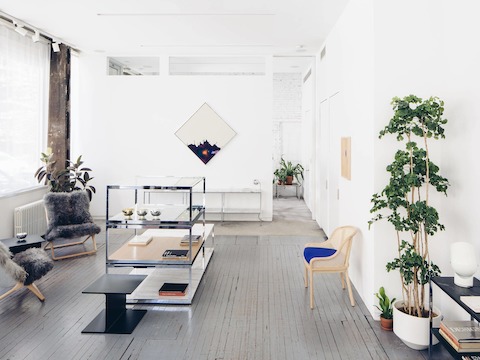
Various Projects selected long Icelandic sheep hair for the Scissor Chairs (left) and a Kvadrat Divina blue wool cushion for the Landmark Chair in natural cane (right).
Can you speak more specifically about the revelations you’ve had or the connections you’ve felt with his work or his process.
Brian: For me what occurs most immediately came from the interview that he did in the 1980s, where he describes his most successful foray into design as being his ability to design a life. I feel like that is very much how we approach design. But it’s also incredibly forward thinking for his time, privileging that as the experience of design—that it really is about all the things around you and then about how you proceed through those and into the world.
Elizabeth: He also believed that the furniture and the objects were less important than the space they occupied. The space was paramount to him, and then how everything within the space worked together. We also related to his attention to detail, and that he was also very focused on comfort. Coming from fashion, the “fit” of the furniture was really important to him. It’s something we can relate to having done a lot of clothing. It’s very important that it works.
What has working with his actual pieces revealed?
Elizabeth: The choices we made were based on our own instincts and interests. What we’ve discovered since starting this is that actually there were private pieces that he’d made using similar materials.
Brian: Somehow the instincts we had for how to approach the furniture were weirdly validated by things we saw after the fact in private collections. It’s a great justification but it came after the fact.
Can you give an example?
Brian: So the longhaired Icelandic sheepskin that we’re using for the upholstery of the Scissor Chair reflects these stools he made for a private collection.
Elizabeth: They were actually found furniture, not pieces that he had designed. And he’d covered them in sheepskin and apparently he’d used a lot of sheepskin, which we had never seen.
Brian: We’d just thought, wow, that would look amazing. It was incredible to see that he had upholstered in a similar way.
Elizabeth: He often used the color saffron. Although we didn’t use anything saffron, the super bright orange we’re using feels like an updated version of the saffron of the seventies.
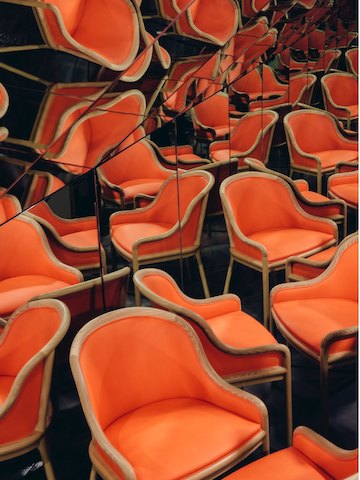
A Landmark Chair and its many reflections fill a tiny mirrored room.
“Our inclination is to approach it in a way that’s less institutional and more intuitive. That’s part of why we’re privileging the senses in all the pieces that we’re executing, and showing that it has a life with other things in your environment.”
-Brian Janusiak
Similar to you, a lot of people have seen Ward Bennett’s work but don’t know who he was or what he represents. Having now had all these experiences, how would you recommend that people get into his work?
Brian: Our inclination is to approach it in a way that’s less institutional and more intuitive. That’s part of why we’re privileging the senses in all the pieces that we’re executing, and showing that it has a life with other things in your environment.
It gets back to what we were talking about earlier, how the space was so important. It’s not so much about the furniture but how the furniture influences the space itself.
Elizabeth: We’ve had the great privilege of visiting a couple of private residences he designed since we started doing this. He designed space in the most sculptural way. It’s fascinating. He created these vistas. I’ve never been in a house like that, where he anticipated the views and created frames in an extraordinary way. He wasn’t a trained architect, so everything he did was through conversations he had with his clients and his own perception.
Brian: It’s a really interesting and direct sensitivity to the experience of a space. It really is about the senses, the materials used, the details of construction, and the space itself — the views in and around that space, how you’re pulling the outside in. It’s sensitive in a way that feels exceptional.
Elizabeth: He described himself as very open—open to meeting and learning and creative collaborations. It’s reflected in his work.
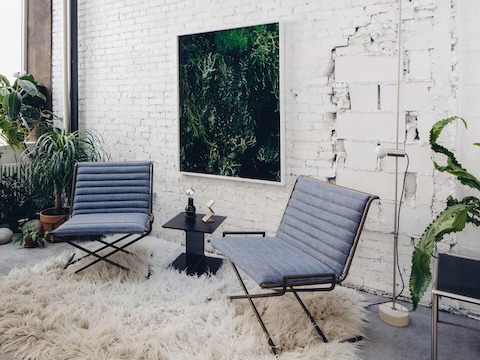
In the back reading room, two Sled Chairs upholstered in Japanese denim along with an I Beam Table.
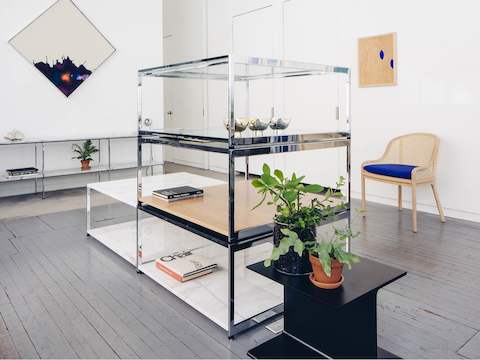
Stacked H Frame Coffee Tables in a mix of marbles, glass, and wood display flatware and other artifacts from Bennett’s oeuvre.
Some of that must stem from the fact that he was self-educated, which requires an openness and also eschews a formality to learning and education. So you really don’t have those rules you have to follow.
Elizabeth: Exactly. You can take whatever you want.
Why do you think he’s not well known? It’s an interesting question, right? In his time he was honored, he was sought after, and yet unlike so many designers of his stature, he isn’t a household name. I’m curious if you have any theories.
Brian: From my standpoint it doesn’t make much sense. He didn’t have a super large studio practice in the way that some more known designers did. I think he spent a lot of time trying to cultivate some balance to how he approached work and not work. I don’t think that answers the question; I just think that was somehow part of it. He seemed, from what I know, to be more private and less self-promoting.
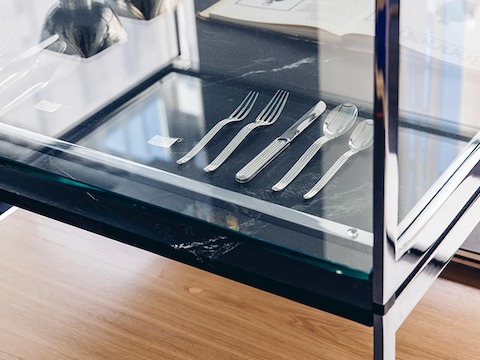
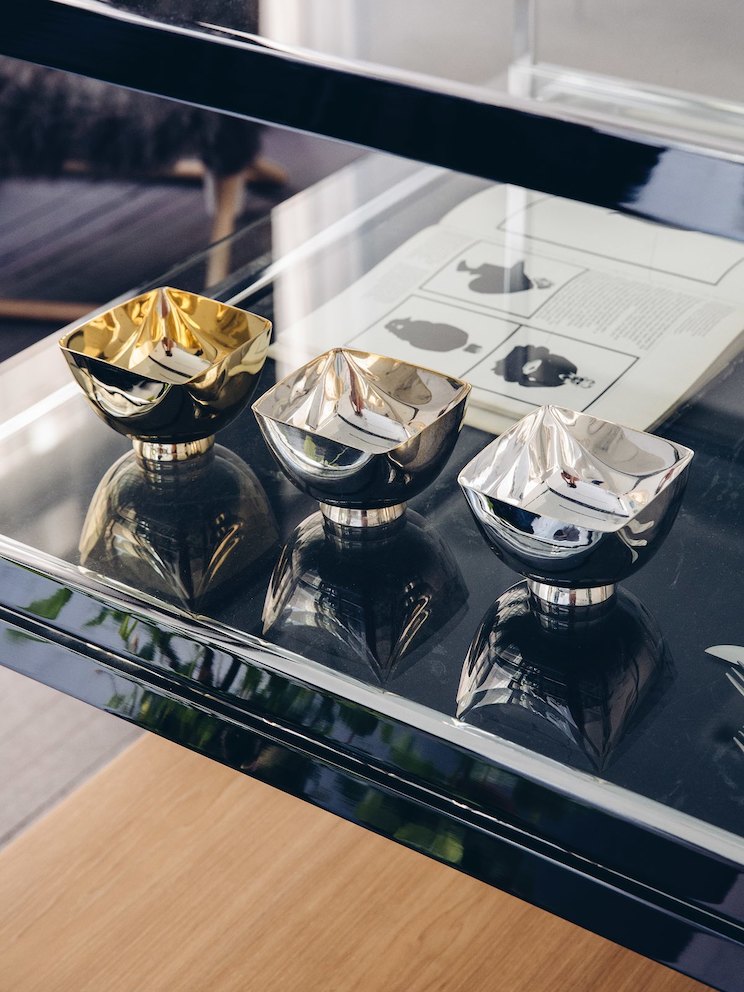
Vintage flatware designed by Ward Bennett for Sasaki (top). Ward Bennett candy dishes (bottom).
What are some of the objects you’ve gathered to be part of this exhibit?
Brian: Some of the flatware he designed for Sasaki, some of the glassware he did for Tiffany and Co., some he also did for Brickel and Associates, and then some brass and silver pieces he did under the Ward Bennett design studio name. It’s not so easy to find.
Elizabeth: For example, it’s very hard to find his lighting. And we haven’t found any artwork yet.
Brian: Now there really is a culture of archiving that’s not just the massive institutional culture of archiving. Now everyone has that in mind, even on an individual level, you know the word and employ it on some level. I feel like for a long time if there wasn’t a larger institution that really did archive and really make sure everything is catalogued, stored, photographed, saved, it wasn’t, and now we don’t have it. So a lot of stuff fell through the cracks.
When people come to see this work, what do you hope they’ll come away with, besides great selfies?
Elizabeth: (laughs) Great selfies are all we want.
Brian: That’s a lot. Great selfies with Ward Bennett?
Elizabeth: I hope people will come away with an understanding of his place in the continuum. He was very influential in the 1970s going into the 80’s—but quietly so. He’s known among people who know him as one of the founders of the high-tech movement, which influenced design for many decades. We’ve continued to repurpose industrial stuff.
Brian: We’d also like people to come away with a curiosity to know more. There are so many ways to link up to what he’s done and to what exists currently in production, as well as in the vintage objects. There are so many ways in. We want people to find out what their relationship or experience with Ward Bennett is based on what they’re doing.
And not just look. People can sit, read, have conversations in this space.
Brian: We want it to be that kind of experience—all about the experience itself, living with this stuff, even if it’s only living for 15 or 20 minutes.
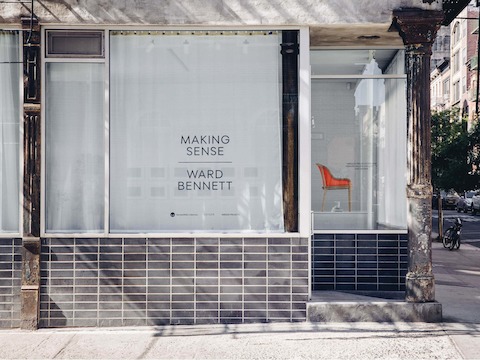
On view, May 15-22, 2015, 12-7pm daily at Project No. 8, located at 38 Orchard Street in New York City.
